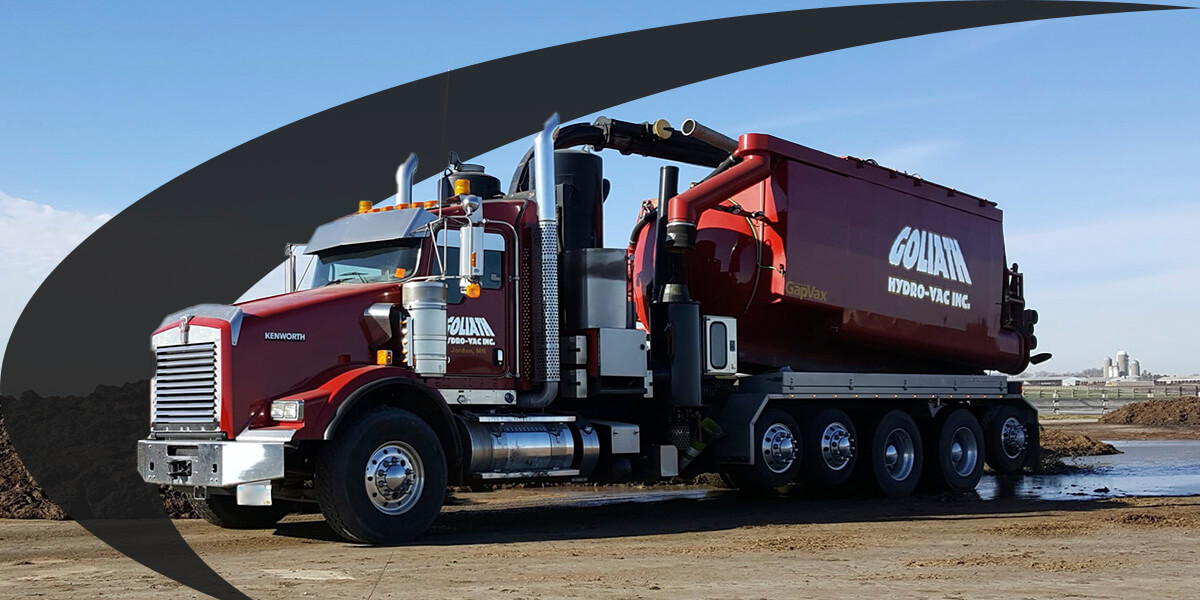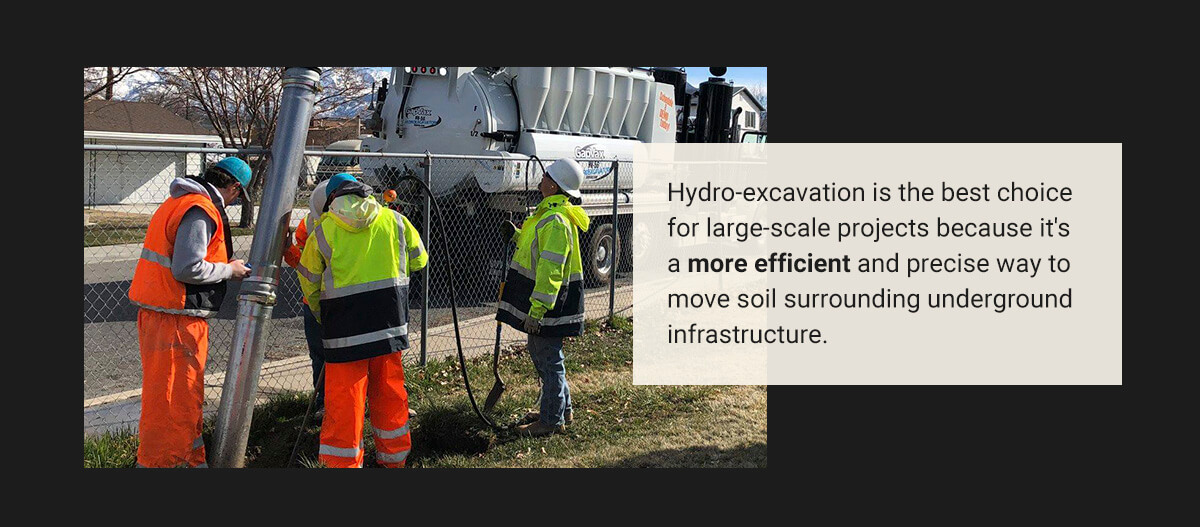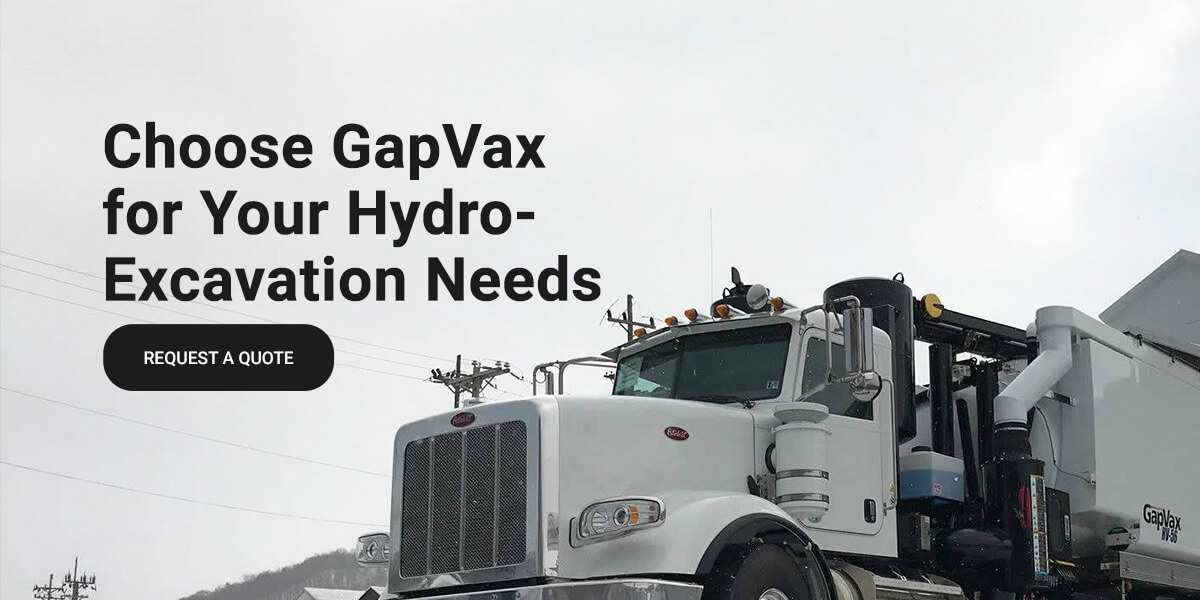
Why Potholing Is Safer With Hydro-Excavators
Published: August 17th, 2023 | Author: Admin
Potholing is a method for finding exposed underground utilities, cables and pipes. Also known as daylighting, potholing aims to confirm existing utility infrastructure. Hydro-excavation is one of the most effective methods for potholing, which involves high water pressure and high-velocity vacuums to break up the soil surrounding utilities.
Hydro-excavators make potholing safer and more efficient than other excavation techniques, which helps construction workers reduce costs and liability for potential damage to underground infrastructure. There are other benefits of hydro-excavators, too, such as more precision and higher levels of accessibility. Continue reading to learn why you should use hydro-excavators for potholing to improve the safety of your worksite.
Lower Risk With Hydro-Excavation vs. Traditional Techniques
Hydro-excavation replaces traditional methods of potholing, such as air vacuums and shovels, to remove materials from the ground. Utility potholing aims to expose underground utility lines so they can be examined, which means using a shovel can be counterintuitive and damage utilities.
Hydro-excavation uses high water pressure and a water vacuum to cut through the ground without cutting through pipes or utilities. The water and soil are sucked up through a vacuum, often transported off the property or to a designated area. Generally, hydro-excavation is a relatively clean process, especially compared to traditional methods. Hydro-excavation is quicker than conventional methods, allowing construction workers to complete tasks more efficiently.
Underground utility lines are delicate and can be damaged by regular machines. These lines are also expensive to install and repair, and with conventional potholing methods, the risk of damage to them increases. Using hydro-excavation to unearth these utilities and pipes can significantly reduce the risk of damage, helping construction workers save money by preventing damage to vital cables and pipes. Due to the lower risk hydro-excavation poses when potholing utilities, it's safer for underground infrastructure and workers involved in managing these tasks.
Pros and Cons of Hydro-Excavation
Hydro-excavation has many benefits for construction workers, such as a lower risk of damage to underground infrastructure and reducing the risk of harm to workers. The reduced risk of injury and damage to utilities is one of the most significant benefits of hydro-excavation, but there are additional benefits of hydro-excavation, including:
- Eliminating guesswork: Hydro-excavation makes it easier to eliminate guesswork when it comes to unearthing utility lines by identifying underground infrastructure's depth, size and location before the excavation work occurs. Hydro-excavation can also reduce the risk of damage to sensitive environmental areas.
- Increasing speed: Hydro-excavation uses high water pressure, making it more efficient and powerful and speeding up excavation processes.
- Improving the ability to penetrate different soil types: Hydro-excavation can break up practically every type of soil, whether compact and challenging to move or soft and malleable. You can also use hydro-excavation in colder climates to break up frozen soil.

- Scaling for large projects: Hydro-excavation is the best choice for large-scale projects because it's a more efficient and precise way to move soil surrounding underground infrastructure.
While there are many benefits of hydro-excavation, there are a few drawbacks to consider, such as:
- Limited water supplies: The tank that houses the water for hydro-excavation is limited to a specific size, which can be challenging when the worksite has a considerable distance from the nearest water source. Once the water supply is used up, it must be replaced before the excavation is completed.
- Higher weight requirements: As you complete excavation work, the truck will gain more weight, which can make it more challenging for these trucks to navigate congested or wet areas. These trucks typically have a tank for clean water and a tank for the slurry.
- Concerns around electric infrastructure: Water is a known conductor of electricity, which raises some safety concerns when working close to electrical infrastructure. Additional safety precautions must be taken to keep workers safe when working near electrical utilities.
Common Mistakes to Avoid
While there are many benefits to hydrovac potholing, some common mistakes can create a hazardous worksite and less efficient work. Some of these mistakes and how you can avoid them include:
- Using improper nozzles: If you don't use a proper nozzle size, it can significantly impact the performance of your hydro-excavator. The wrong nozzle for the soil condition will limit your work's performance and productivity capabilities. You can prevent these mistakes by ensuring all operators are trained on the maintenance and operational aspects of the equipment.
- Lack of awareness of surroundings: Another common mistake is when workers are unaware of their surroundings, posing significant safety risks. You can help workers stay aware of their surroundings by posting signage and using safety cones. You should also ensure operators don't get too close to overhead power lines and obstructions, or open holes, as cave-ins are possible and can be a significant safety risk.
- Parking the truck too close to the dig site: Hydro-excavation trucks can bear a lot of weight, especially when full of water and slurry. Depending on the surface the truck is parked on, the truck's weight and vibration can cause trench collapse and roll-overs. This scenario is highly unlikely on roads, where you should be able to park the truck right next to the hole. Other surface types may require the truck to be parked away from the work area.
- Not understanding the full capabilities of the vacuum truck potholing systems: Vacuums range in configurations and sizes, which will determine how much velocity the vacuum can generate. Vacuums that aren't built for the job can cause damage to the system because the blower won't have the proper filtration or adequate suction pressure. It's essential to ensure you choose the proper vacuum system for the job.
Apart from these common mistakes, you should follow general safety tips to ensure your workers are safe during potholing. Some of these tips include:
- Stopping the excavation process if you damage a utility line or find one that's in failing condition.
- Evacuate people from the area if a damaged utility line poses a safety hazard.
- Preventing an exposed utility line from being unattended.
- Avoiding mechanized equipment when you're around exposed utility lines.
Following these safety tips and avoiding common mistakes can help your work move smoothly and prevent unwanted accidents on the job site.

Choose GapVax for Your Hydro-Excavation Needs
Hydro-excavation trucks are one of the best methods for potholing, offering superior efficiency, productivity, and safety. GapVax has a wide selection of hydro-excavation trucks that are ideal for wet and dry filtration. Our HV Series hydro-excavation trucks boast a 1,000-gallon water tank and a six-cyclone filtration system, ensuring the best performance for your potholing projects.
Even though our trucks use high water pressure and powerful vacuums to break up soil for excavations, they can also be used for various industrial vacuum applications, from power plants to pipelines. Request a quote on one of our HV Series trucks to learn more about their capabilities and how they can benefit your applications.
Back To Blog Posts